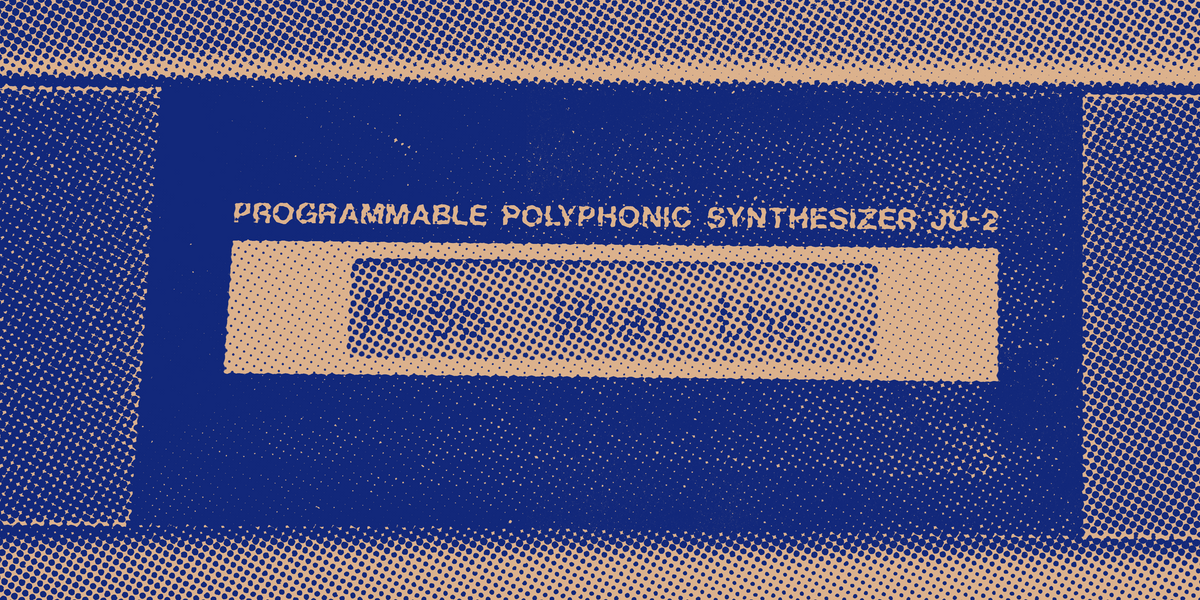The ultimate sound of the 90s rave (and why it was the Hoover)
It's the sound of rave culture in one big, bold, and iconic synthesizer blast. And the Hoover is here to stay.

The Hoover sound was born out of the Roland Alpha Juno, a polyphonic synthesizer released in 1985. The Alpha Juno was part of Roland's effort to make synthesizers more accessible and affordable, featuring a simplified user interface and a lower price point than many of its contemporaries. Despite its simplicity, the Alpha Juno was capable of producing a wide range of sounds, thanks to its digitally controlled oscillators and versatile filter section.
The preset that would become known as the Hoover, officially named "What the...?", was one of many included with the Alpha Juno. The name "Hoover" was a playful nod to its resemblance to the sound of a vacuum cleaner, specifically those made by Hoover, a popular vacuum brand in the UK.
The Hoover sound is characterized by its rapid, pitch-bending modulation, creating a sound that is both aggressive and captivating. It's a sound that seems to scream, a sonic representation of the energy and rebellion inherent in the electronic music scene of the time. The Hoover's unique sound profile is a result of the Alpha Juno's pulse width modulation capabilities, combined with the use of a high resonance setting on the synthesizer's filter.
The Hoover in Music
The Hoover sound made its first significant appearance in the late 80s and early 90s, during the rise of rave culture. It became a staple in genres like hardcore, jungle, and drum and bass.
One of the earliest and most notable uses of the Hoover was in Human Resource's "Dominator," a 1991 hardcore track that utilized the sound to create a relentless, driving rhythm that perfectly encapsulated the energy of the burgeoning rave scene. The Hoover sound was used to create a pulsating, hypnotic rhythm that drove the track forward, creating a sense of urgency and intensity that was a perfect fit for the high-energy world of hardcore.
The Hoover sound was also prominently featured in The Prodigy's "Charly," a track that played a significant role in bringing rave culture into the mainstream. The track's use of the Hoover, combined with its catchy melody and controversial music video, helped it reach number 3 on the UK Singles Chart, bringing the Hoover sound to a much wider audience. The Prodigy's innovative use of the Hoover sound helped to establish them as one of the leading acts in the electronic music scene, and set the stage for their later success.
Cultural Significance
The cultural significance of the Hoover sound cannot be overstated. It was a sound that defined a generation, a symbol of the rebellious spirit and DIY ethos of the rave scene. It represented a break from traditional music production, embracing the new and experimental possibilities offered by electronic instruments.
The Hoover sound also played a significant role in the evolution of electronic music. It helped to establish a new sonic palette for producers, opening up new avenues for musical exploration. The sound's aggressive, in-your-face quality helped to push electronic music into harder, more intense directions, influencing the development of genres like hardstyle and gabber.
The Hoover's influence can also be seen in the broader cultural impact of electronic music. The sound's distinctive, aggressive quality helped to establish electronic music as a legitimate and powerful form of musical expression, challenging traditional notions of what music could be.
Today, the Hoover sound continues to be used and reinvented by producers, a testament to its enduring appeal. It's a sound that carries with it a sense of nostalgia, a reminder of the early days of electronic music, while still sounding fresh and exciting in new musical contexts.
The lasting legacy of more than just a "synth preset"
The Hoover sound is more than just a synthesizer preset. It's a piece of musical history, a sound that helped to shape the landscape of electronic music and continues to influence it to this day. It's a testament to the power of innovation and creativity in music production, and a reminder of the limitless possibilities that electronic music offers. It's a symbol of the DIY ethos of the early rave scene, a sound that encapsulates the energy, rebellion, and innovation of a generation. And perhaps most importantly, it's a reminder of the power of music to bring people together, to create shared experiences, and to inspire us to see the world in new and exciting ways.


